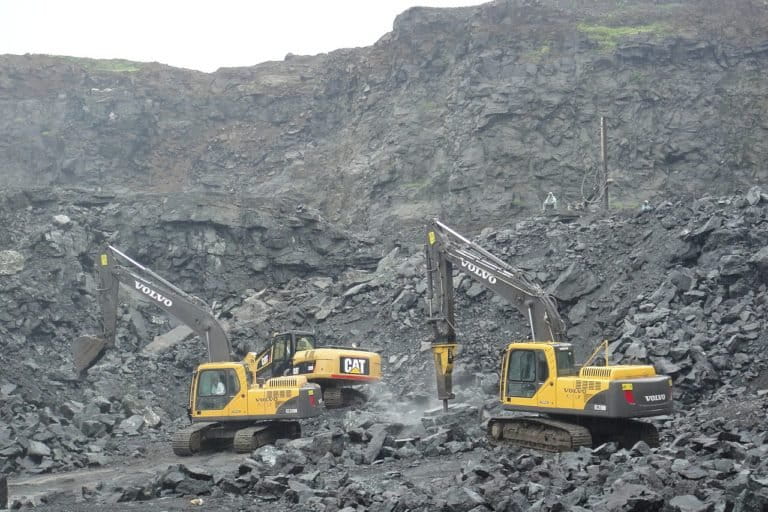- The United Nations Environment Programme is organising consultations across the world to assess most pressing mineral resource governance challenges and best practices to inspire sustainable development in extraction, use and management of minerals.
- It has also conducted such consultations in Asia including South Asia and during one such consultation, the involvement of communities impacted by mining as a stakeholder in the mining business emerged as a way forward for sustainable mining and development of communities.
- Among the communities impacted by mining, the civil society groups highlight the impact on tribal communities especially women and seek a special emphasis for their protection.
“Mining companies come to our villages and our forests to exploit the resources underneath and everyone in the value chain makes money. But it is the tribal community that bears the brunt and has never seen the development promised by everyone,” said 49-year-old tribal community leader Indu Netam while recounting her struggle to seek justice for the tribal community for the last 30 years.
Netam belongs to the Gond tribe and lives in the village Marka Tola of the north Bastar region in mineral-rich Chhattisgarh in central India. She is the convener of the Adivasi Jan Van Adhikar Manch which is a network of indigenous people working on issues of forest rights, land issues and other connected issues such as water and environment. She has been opposing the mining companies in her area since the early 1990s to stop bauxite mining.
In a long conversation with Mongabay-India, she recounted her community’s struggle to stop mining in their area, stating that it was threatening their forest, land and livelihood. In this process, she remembered how she and many others went to jail, were beaten up and she even lost her brother who was killed. “A company had got a prospecting license but our community’s opposition has not allowed the mining to happen so far. We have struggled for long to make ourselves heard and fought to take back the land which was given to the non-tribal people on the basis of fake documents. But then our gram sabha (village council) passed a resolution that if mining has to happen, then there should be community involvement. Thus, we formed a cooperative to ensure that locals are part of whatever mining happens in our area because otherwise the local community is left with nothing,” Netam told Mongabay-India while adding that anyone who protests against the companies is termed as an extremist.
She stressed that there is no end to the hunger of mining companies. “Today it is our area, tomorrow it will be someone else’s and after that, it may be another country. They won’t stop till they out everything and destroy everything. They will never be satiated. Jungle and nature are our gods and we stand to lose everything if we lose them.”
Netam is among many community leaders, academicians and civil society experts who are increasingly voicing their concern about unsustainable mining practices being followed across India. They have been seeking sustainable mining, the involvement of the local communities in mining and sharing of profits.
Similar concerns form the bedrock of resolution adopted by the United Nations Environment Assembly in March 2019 which recognised the need to share knowledge and experience with regard to regulatory approaches, implementation practices, technologies and strategies for the sustainable management of metal and mineral resources, including over the whole life of the mine and the post-mining stage.
Read more: [Video] Is mining in India ‘just’ for the environment and communities?
United Nations consultation for sustainable mining
The UN resolution encouraged “governments, businesses, non-governmental organisations, academia and international institutions” to promote “due diligence best practice along the supply chain, addressing broad-based environmental, human-rights-, labour- and conflict-related risks in mining, including the continuing increase in transparency and the fight against corruption, with the support of the Extractive Industries Transparency Initiative, implementation and monitoring of existing environmental standards, and accountability.” The resolution also talked about sustainable mining and sourcing of raw materials in order to move towards decoupling economic growth from environmental degradation.
The resolution asked the United Nations Environment Programme (UNEP) to collect information on sustainable practices, identify knowledge gaps and options for implementation strategies, and undertake an overview of existing assessments of different governance initiatives and approaches relating to the sustainable management of metal and mineral resources. It asked the UNEP to report on it in the fifth session of the UNEA scheduled in Nairobi in February 2021.
Following this, UNEP has been undertaking a series of consultations across the world to assess most pressing mineral resource governance challenges, best practices to inspire sustainable development in extraction, use and management of minerals and focus for future action including by international or United Nation bodies on mineral resource governance. It has been seeking feedback from all stakeholders through website, surveys, written and video submissions etc.

During one such consultation (July 2020) that focused on the south and southeast Asia, experts from India also took part.
In that consultation, Amarendra Das of the School of Humanities and Social Sciences at the Indian government’s National Institute of Science Education and Research (NISER), emphasised on the involvement of communities in the mining process.
“At present, the minerals are given to a company who is willing to pay the highest price through a bidding process and most of the time, the mining owner is from outside the mining locality. Most of the profit goes outside the locality, but it is the local communities that bear the environmental costs. In India, to compensate for the environmental damages and other losses, the mining companies give two percent of their profits to the District Mineral Foundation and that money will be spent on the local community … But this money is not sufficient to compensate for the loss of the local community,” said Das during the consultation.
He recommended that there should be joint stockholding in the company where the local people should have a 50 percent share in the company so that whatever profit accrues to the company goes to the local community. “In such a case there would be a lot of accountability of the mining companies when they extract the minerals they will take enough precautions not to destroy the environment. For the displacement of the local community, the losses can be taken care of .. this will also ensure intragenerational and intergenerational equity.” The concept of intergenerational also finds a mention in India’s National Mineral Policy 2019.
Goa Foundation, a civil society organisation which has been fighting against unsustainable mining practices, has also sent a submission to the UNEP and took part in the July 2020 consultation as well.
In its submission, the Goa Foundation called for implementing intergenerational equity consistently for minerals across the planet stating that it is in line with the sustainable development goals and the Universal Declaration of Human Rights.
The foundation said that it is important to understand that as long as royalties and other mineral sale proceeds are called “revenue”, “income”, “earnings” or “tax”, politicians and voters will advocate for increasing extraction. “This will lead to every bit of mineral being extracted. If on the other hand minerals were understood to be a shared inheritance with the primary duty to ensure future generations inherit either the minerals or their full value, proposals for extraction will raise different questions. Do we need to sell off our inherited wealth? Since we can only extract once, is this the right time to sell? Are we saving the entire sale proceeds for our children and future generations in a new intergenerational asset (“non-wasting asset”)?” said the Goa Foundation’s submission.
Read more: India’s mining sector: Present is tense and future could be imperfect
Impact of mining on communities
Netam noted that in tribal areas where mining is happening, the local community only gets jobs as labourers and that too is not permanent. “Even animals come to know when they are being fooled but we the Adivasis (indigenous people) are considered worse than them and not even second-grade citizens. They (companies) want to exploit us but want us to stay quiet. Tomorrow, if minerals are found beneath cities like Varanasi or Mathura will they (companies) be allowed to mine there? But there is no value of tribal people,” said Netam.

India’s National Mineral Policy 2019 mentions that trust is vital to India’s ability to achieve sustained growth in the mining sector and the “state will endeavour continuously to increase trust level between government, miners, local communities and other stakeholders through openness, fairness, better regulation, responsiveness, inclusive policymaking.”
The policy notes that the existence of minerals in tribal areas with rich biodiversity requires a comprehensive assessment and that land acquisition and displacement of tribal communities due to mining projects may lead to distress in tribal communities. “In areas in which minerals occur and which are inhabited by tribal communities and weaker sections, it is imperative to recognise resettlement and rehabilitation issues as intrinsic to the development process of the affected zone,” said the policy while adding that a mechanism will be evolved which would actually improve the living standards of the affected population and ensure them a sustainable income.
Netam however, feels that the tribal communities are not considered in the decision-making process. For instance, the government is bringing mining reforms through consultation on their website and in English. “But the people and communities who will be impacted have no say in this process. What about us? Shouldn’t we be in the loop or have any say? That is why local communities as stakeholders in any mining are important.”
The impact of mining on communities is reflected in various aspects of their lives. For instance, Bhanumathi Kalluri of Hyderabad-based Dhaatri Trust notes that in the poor and tribal communities that are impacted by mining women bear the major brunt.
“There are no safeguards for women impacted by mining activities. Once the mines are closed or abandoned, workers and local communities are left with no source of livelihood. In many of the coal mines affected areas, women and young girls become susceptible to sexual abuse and trafficking,” Kalluri told Mongabay-India.
Kalluri along with many other organisations working for the mining-affected communities have also sent a letter to the central government on the recently proposed mining reforms urging it to abandon such hasty and environmentally risk inducing privatisation of mining exploration and expansion, coal auctions and dilution of constitutional safeguards.
Read more: India proposes overhaul of mining sector amid concerns over legality and social impact
Banner image: Displacement and rehabilitation are big issues for the communities impacted by mining projects. Photo by Rita Willaert/Flickr.













